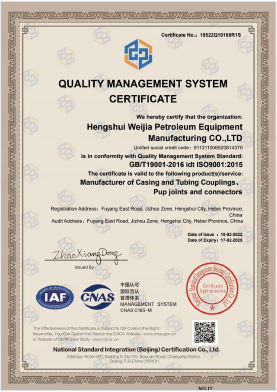- Afrikaans
- Albanian
- Amharic
- Arabic
- Armenian
- Azerbaijani
- Basque
- Belarusian
- Bengali
- Bosnian
- Bulgarian
- Catalan
- Cebuano
- Corsican
- Croatian
- Czech
- Danish
- Dutch
- English
- Esperanto
- Estonian
- Finnish
- French
- Frisian
- Galician
- Georgian
- German
- Greek
- Gujarati
- Haitian Creole
- hausa
- hawaiian
- Hebrew
- Hindi
- Miao
- Hungarian
- Icelandic
- igbo
- Indonesian
- irish
- Italian
- Japanese
- Javanese
- Kannada
- kazakh
- Khmer
- Rwandese
- Korean
- Kurdish
- Kyrgyz
- Lao
- Latin
- Latvian
- Lithuanian
- Luxembourgish
- Macedonian
- Malgashi
- Malay
- Malayalam
- Maltese
- Maori
- Marathi
- Mongolian
- Myanmar
- Nepali
- Norwegian
- Norwegian
- Occitan
- Pashto
- Persian
- Polish
- Portuguese
- Punjabi
- Romanian
- Russian
- Samoan
- Scottish Gaelic
- Serbian
- Sesotho
- Shona
- Sindhi
- Sinhala
- Slovak
- Slovenian
- Somali
- Spanish
- Sundanese
- Swahili
- Swedish
- Tagalog
- Tajik
- Tamil
- Tatar
- Telugu
- Thai
- Turkish
- Turkmen
- Ukrainian
- Urdu
- Uighur
- Uzbek
- Vietnamese
- Welsh
- Bantu
- Yiddish
- Yoruba
- Zulu
Understanding the Importance of Casing and Tubing Connections in Oil and Gas Operations
Understanding Casing and Tubing Connections in Oil and Gas
In the oil and gas industry, the integrity of well constructions largely depends on the proper functioning of casing and tubing connections. These connections are critical components in the drilling and completion process and play an essential role in maintaining well integrity, enabling efficient production, and ensuring operational safety.
What are Casing and Tubing?
Casing is a series of steel pipes installed in a wellbore to stabilize the well, prevent collapse, and protect groundwater from contamination. Tubing, on the other hand, is the pipe through which oil or gas flows from the reservoir to the surface. The selection and installation of these components are crucial for the success of drilling operations.
Types of Connections
Casing and tubing connections can be categorized into several types, each designed to meet specific performance requirements and operating conditions. The most common types of casing connections include
1. API Connections Developed by the American Petroleum Institute, these connections adhere to standardized specifications for strength and compatibility. API connections, such as Buttress and Pin, are widely used and are favored for their reliability and ease of installation.
2. Premium Connections These are designed for high-performance drilling conditions. Premium connections support sophisticated sealing mechanisms and higher load capabilities, making them ideal for unconventional resources and deepwater wells.
3. Composite Connections With advancements in materials, composite connections have been developed that offer superior corrosion resistance and enhanced mechanical properties. They are especially valuable in challenging environments where traditional steel connections may degrade.
casing and tubing connections

Importance of Proper Connection
The integrity of casing and tubing connections directly affects the safety and efficiency of a well. Improperly installed connections can lead to leaks, well blowouts, and environmental hazards. Thus, correct installation practices and regular inspection are vital. This involves utilizing the right tools, adhering to torque specifications, and conducting thorough integrity tests.
Inspection and Maintenance
Regular inspection of casing and tubing connections is critical in extending the life of a well. Inspection techniques include
- Visual Inspections Routine checks for visible signs of wear, corrosion, or deformation can help identify potential issues. - Ultrasonic Testing This non-destructive testing method uses high-frequency sound waves to detect internal flaws and wall thickness in pipes. - Pressure Tests Conducting pressure tests can reveal leaks in connections and ensure their integrity under operational conditions.
Innovations in Casing and Tubing Connections
The oil and gas sector is continuously evolving; innovations in materials and technology have led to the development of enhanced casing and tubing systems. Hybrid materials that combine the benefits of traditional steel with advanced polymers are gaining traction in corrosive environments. Furthermore, advancements in connection technology, including self-sealing mechanisms and smart connections equipped with sensors, promise to improve the reliability and safety of oil and gas extraction processes.
Conclusion
Casing and tubing connections are fundamental to the success and safety of oil and gas operations. As the industry faces new challenges, understanding and implementing these connections through precise engineering and stringent quality control measures will be crucial. Continuous advancements in technology and materials will enable the industry to push the boundaries of what is possible in drilling and production, ultimately leading to more efficient and safer resource extraction processes. By prioritizing the integrity of these critical components, we can support the ongoing evolution of the oil and gas landscape.
-
Tubing Pup Joints: Essential Components for Oil and Gas OperationsNewsJul.10,2025
-
Pup Joints: Essential Components for Reliable Drilling OperationsNewsJul.10,2025
-
Pipe Couplings: Connecting Your World EfficientlyNewsJul.10,2025
-
Mastering Oilfield Operations with Quality Tubing and CasingNewsJul.10,2025
-
High-Quality Casing Couplings for Every NeedNewsJul.10,2025
-
Boost Your Drilling Efficiency with Premium Crossover Tools & Seating NipplesNewsJul.10,2025







